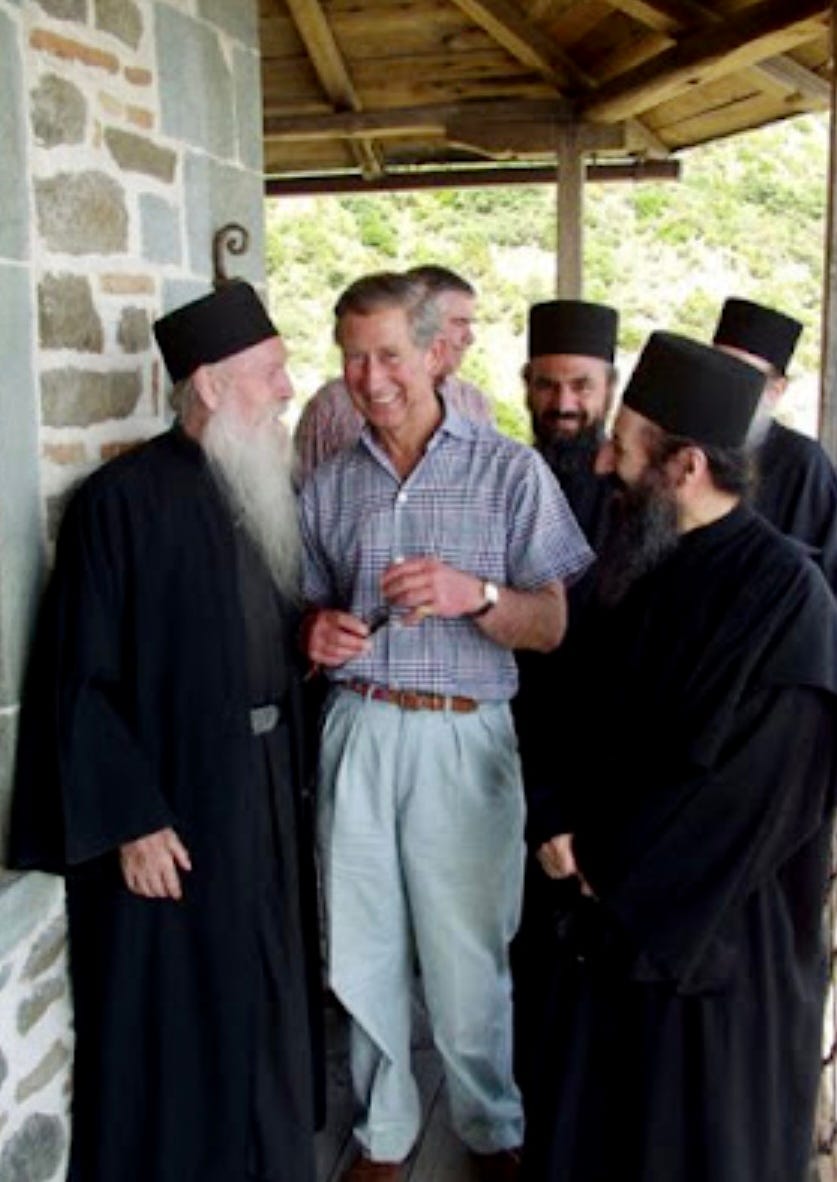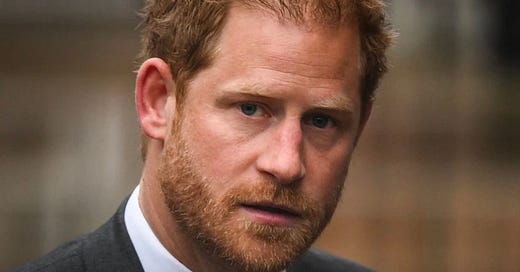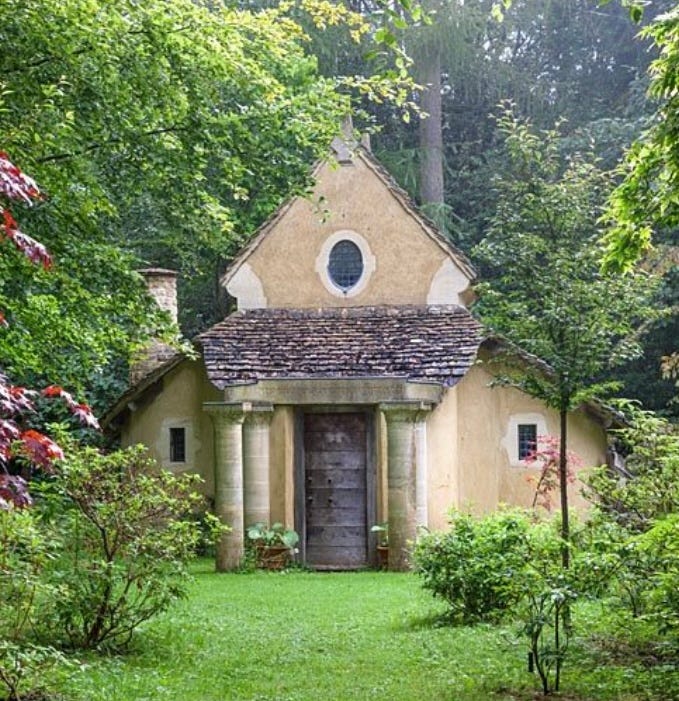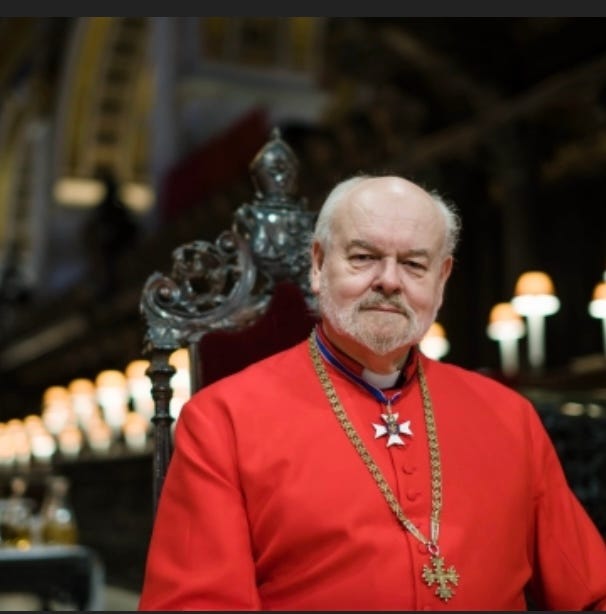Sanctuary
The spotlight may be on Prince Harry's visit to London, But the King's stay at his Highgrove estate prompts some thoughts on his extraordinary Sanctuary there
Prince Harry has turned up unexpectedly in London to attend a four-day preliminary hearing on a legal claim that he and six other prominent figures (including Sir Elton John and Liz Hurley) have made against the owner of the Daily Mail and the Mail on Sunday. They’re alleging phone hacking and other invasions of privacy that the publisher has called “preposterous smears.”
Rather than watch the proceedings remotely from his home in Montecito, California, Harry flew to England for the first time since the funeral of his grandmother the Queen last September. But he won’t be seeing either Prince William (away from London on a vacation with his family) or the King, who is busy preparing for a state visit to Germany—the first of his reign—that begins tomorrow. Harry hasn’t had contact with either his brother or his father since he attacked them in his Netflix documentary last December, criticism amplified in his memoir, Spare, in January.
The King and his Sanctuary
But enough about Harry. What caught my eye is that King Charles has been working from Highgrove, his home in Gloucestershire. And that means Charles has been spending time—as he does whenever he visits Highgrove—in the highly unusual “Sanctuary” he built in his garden in 1998 after the first of his half-dozen secret pilgrimages to the all-male Eastern Orthodox monasteries on Mount Athos in Greece. He envisioned his own monastery in miniature—his “sacred place”-- to mark the millennium. “He wanted to see it in a glade from his dressing room, he wanted to see it through the trees,” Charles Morris, the architect of the Sanctuary, told me.

Prince Charles enlisted Morris not only because the architect had successfully designed Highgrove’s Orchard Room—a building for receptions and other gatherings—but because he noticed that Morris’s shoes had been mended. “He had seen the stitching along the soles,” Morris told me. Like Charles, Morris understood the value of preserving something well made.

The ocher-colored Sanctuary is exceedingly well made, using local stone and timber, bricks of Highgrove clay and chopped barley straw, and Cotswold tiles on the roof. Charles asked for four columns outside the front door similar to the ones at the Orchard Room. “Oh what wonderfully fat columns,” Charles said when he first saw them. “They are rather huggable, sir, aren’t they?” Morris replied.
“Druidic comes to mind”
Charles asked that the building be designed in the shape of a cross, with an inscription in stone above the door taken from the Evening Collect of The Book of Common Prayer: “Lighten our darkness, we beseech thee, O Lord.” He also required that Morris incorporate geometry from the mathematical formulas in Plato’s Epinomis into the design of the building.
Few people have seen the Sanctuary’s tiny interior. When I toured the Highgrove gardens a decade ago with Charles’s head gardener Debs Goodenough, I couldn’t even walk into the wide perimeter surrounding it. But I did see the four knobs on the front door. The King has never carried keys, so Morris created the four doorknobs, two of which had to be manipulated by Charles in a special way to open the door.
When Charles gave Andres Duany (one of his favorite architects) a tour, Duany recalled it as “very tight, more like a cave than anything. You step down into it. You go into the earth a little bit. I remember thinking I have never seen anything like it. There is something incredibly primitive, kind of early, about it. Druidic comes to mind.”
Runner beans and rutabaga
The interior is spare, with custom-made Orkney chairs reinforced by Morris to support Charles’s bad back. There is no electricity, just candlelight and a fireplace. Small stained-glass windows depicting Highgrove flowers and leaves are dedicated to the late poet laureate, Ted Hughes, a close friend of both Charles and his beloved grandmother, the Queen Mother. A vegetable bas relief on the barrel vault ceiling is decorated with two of the King’s favorites—runner beans and rutabaga, the latter chosen specifically for its fat shape. There are Greek Orthodox texts from The Philokalia and Byzantine icons made by a hermit Charles had met on Mount Athos. The altar is a natural piece of rock cut horizontally into three layers. After staring at it for some time, Charles told Morris, “If you look at it carefully, in the stone, you can see the Holy Dove.”
Richard Chartres, then the Bishop of London (a friend of Charles since their days at Cambridge together) consecrated the Sanctuary in 1999. “It’s a sacred building, really contemplative,” Charles once said. “It’s where nobody can get at me. When I come here, they know I’m here. It’s a discipline, you know, that I will do that every day. It’s not always easy, even if it’s only for ten minutes.”
And finally, my new book about the grandfather King Charles only knew for three years, and the grandmother he adored until she was nearly 102, will be published a week from today.
.









Did Harry attack Charles and William? Or did he tell the story of his life, in his own words, as Charles himself did with Jonathan Dimbleby? Did Charles not give his opinion about his parents and their parenting in that book? Did people say that Charles had 'attacked' The Queen and Prince Phillip? Or is it just Harry who is expected to 'never complain, never explain' while others leak stories?